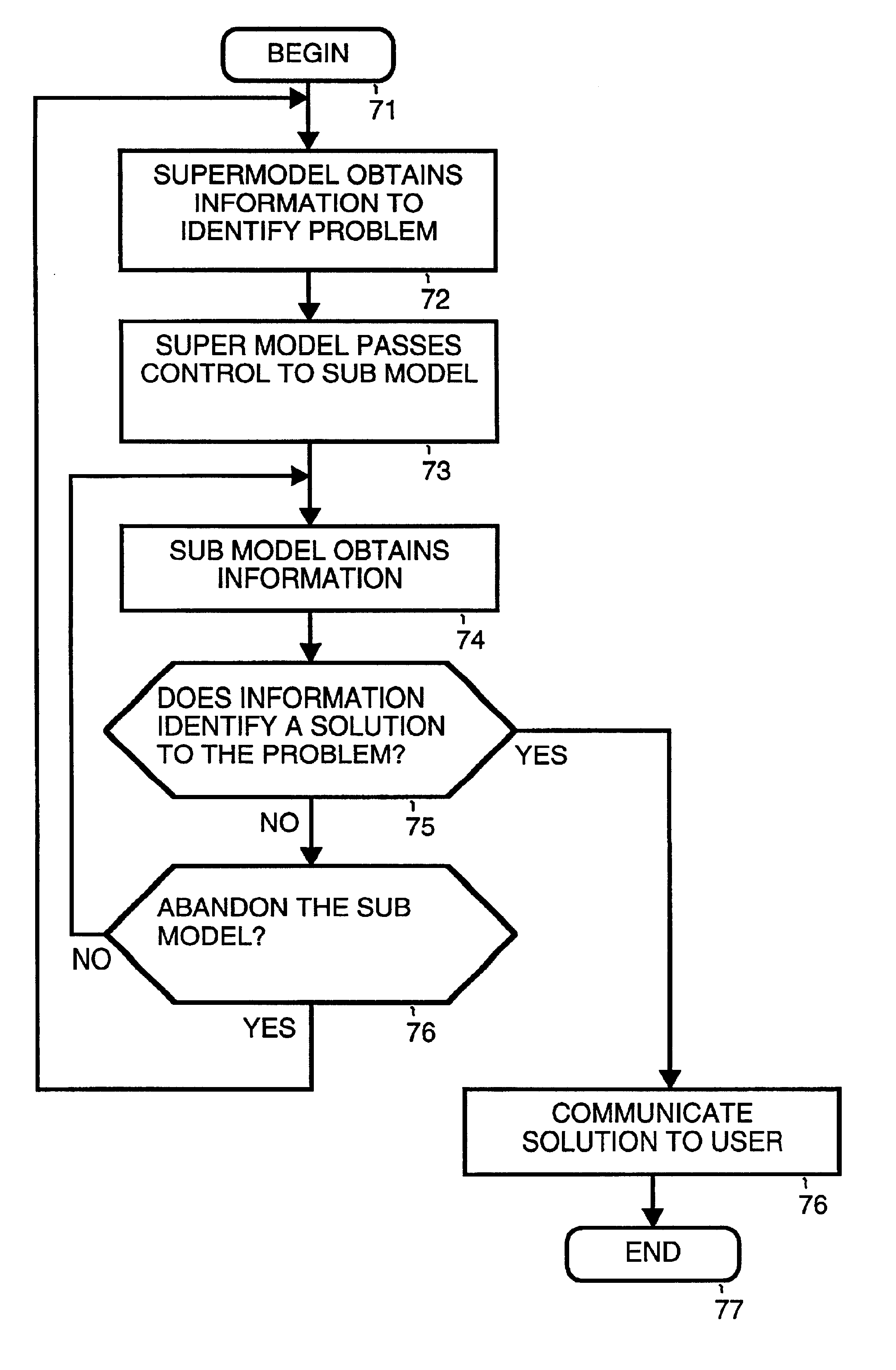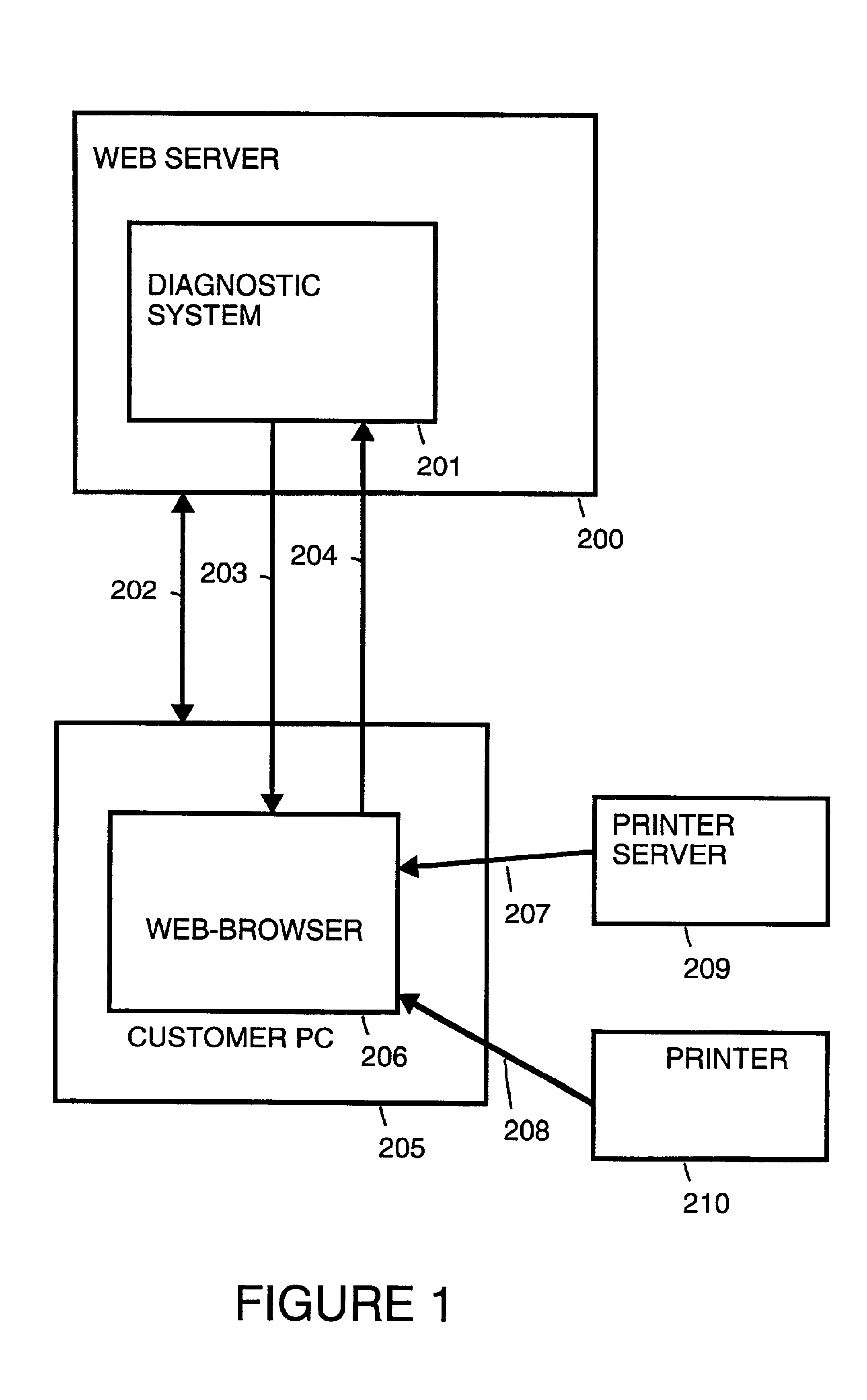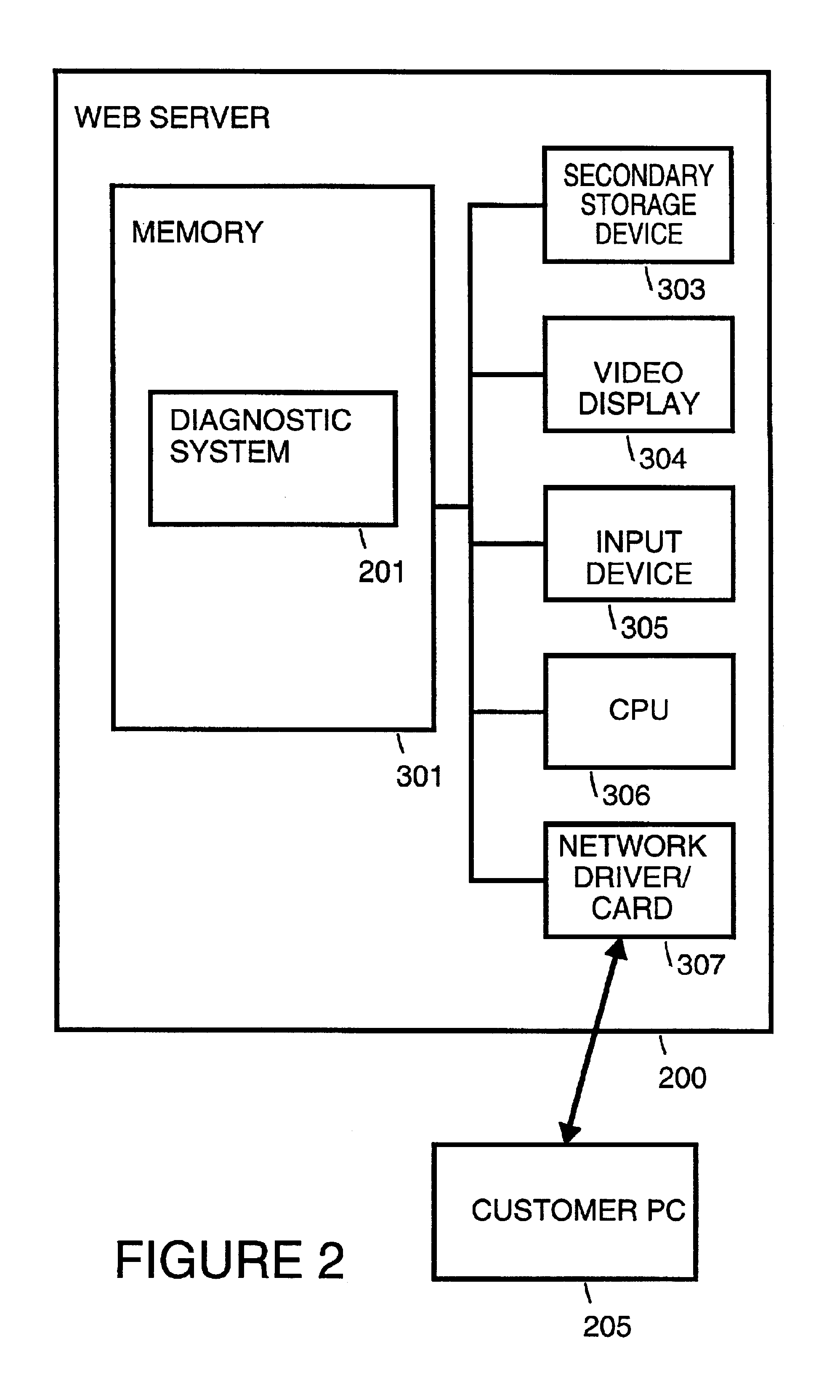Model selection for decision support systems
a decision support system and model selection technology, applied in probabilistic networks, adaptive control, instruments, etc., can solve the problems of high cost of manufacturers to diagnose the system of their customers, difficult to find the correct model in a large tree of models, and it is not possible for an inexperienced user to identify the correct model
- Summary
- Abstract
- Description
- Claims
- Application Information
AI Technical Summary
Problems solved by technology
Method used
Image
Examples
Embodiment Construction
[0021]The present invention is useful for model selection. For example, the preferred embodiment of the present invention is useful to select any model or system that can do the following: (1) generate a probability of one or more problems (also known as diagnoses or causes); (2) generate a next question or test; and (3) generate a probability of each possible answer of that next question or test, given the information known to the system.
[0022]While the preferred embodiment of the present invention applies to any model or system that can perform the above listed functions, a Bayesian network diagnostic system is used in description of a particular embodiment of the invention. Selected models do not have be Bayesian networks but can be another type of system, for example, case based systems, fuzzy systems, rule based systems, etc.
[0023]Below, the preferred embodiment is described for selecting among sub models in a diagnostic environment. However, as will be understood by persons of...
PUM
 Login to View More
Login to View More Abstract
Description
Claims
Application Information
 Login to View More
Login to View More - R&D
- Intellectual Property
- Life Sciences
- Materials
- Tech Scout
- Unparalleled Data Quality
- Higher Quality Content
- 60% Fewer Hallucinations
Browse by: Latest US Patents, China's latest patents, Technical Efficacy Thesaurus, Application Domain, Technology Topic, Popular Technical Reports.
© 2025 PatSnap. All rights reserved.Legal|Privacy policy|Modern Slavery Act Transparency Statement|Sitemap|About US| Contact US: help@patsnap.com



